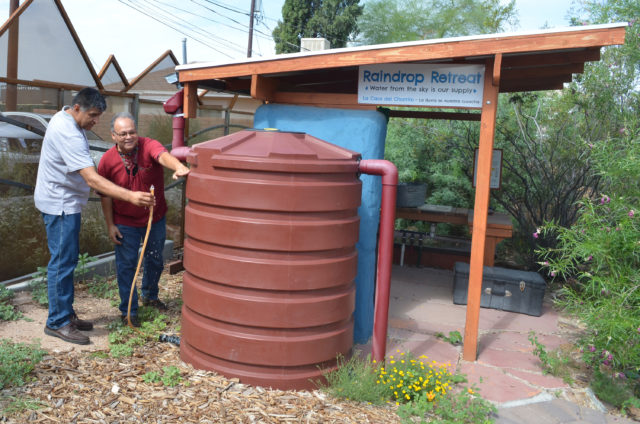
Rain can mean more than just the need to use your windshield wipers while driving. While rain may be a welcoming break from the many hot and sunny days in the Sonoran Desert, often it leads to flooded streets and parking lots that can be hazardous to both motorists and pedestrians.
In nature, rainwater either runs off into lakes and streams or drains into the ground where it replenishes groundwater aquifers. Hard, impermeable surfaces like concrete and asphalt that make up the roofs, streets, parking lots, and sidewalks of our cities make it difficult for water to go anywhere but down the storm drain or collect in spaces that don’t have proper drainage. Instead of rainwater posing flood risks that could cause harm to cars, homes, and people, it can be harnessed to create lush, green spaces.
By capturing and diverting the rainwater that would ordinarily flow down the street to newly planted vegetation, barren dirt lots can be transformed. The new trees and shrubs won’t rely as heavily on municipal water supplies, and will offer improved air quality, reduced flooding and erosion, greater groundwater infiltration, wildlife habitat, and the cooling effects of shade. A neighborhood in Tucson, AZ will be taking advantage of these benefits to help make the community more resilient against flooding.
The Sonoran Institute was awarded a 2017 Blue Water Leadership Grant from the Royal Bank of Canada to pursue work in Tucson, AZ around issues of urban flooding and water quality. A neighborhood adjacent to Airport Wash on the city’s south side has roads that often become impassable even during light rainfall. The Sonoran Institute and Watershed Management Group (WMG) are collaborating to capture rainwater at a site in the neighborhood—New Hope Church. The rainwater will nourish the new vegetation and reduce the extensive flooding that occurs at and around the church. The two organizations have connected with church leaders to begin crafting the project’s design and implementation plan with community members to transform barren parts of the property into welcoming shaded areas.
To familiarize ourselves with the sites and people involved, we got together on a recent August morning to tour and meet one another. John Shepard, our Senior Director of Programs, and I joined the church leaders along with Joaquin Murrieta, WMG’s Cultural Ecologist, on the tour. Like many of our summer days out here in the desert, it began warm and slowly crept to a high of 100 degrees as we arrived at our first stop, WMG’s Living Lab.
First Stop: Watershed Management Group’s Living Lab
As we gathered inside the Living Lab’s conference room to take brief shelter from the sun and introduce ourselves, we were greeted with a welcoming gift; a tall pitcher of freshly filtered rain water. After we finished our glasses and chatted about the Living Lab’s history, the tour began. The lab showcases large water harvesting tanks, edible gardens watered by multiple sources, and pop-up irrigation systems that re-distribute water from areas that flood to other parts of a landscape. Their backyard has a mini amphitheater with permeable pavement that drains into a 10,000 gallon underground tank. Joaquin and I opened the tank’s hatch so we could all peer inside. It was filled to the brim and appeared bottomless; the likely source of the rainwater we had just consumed.
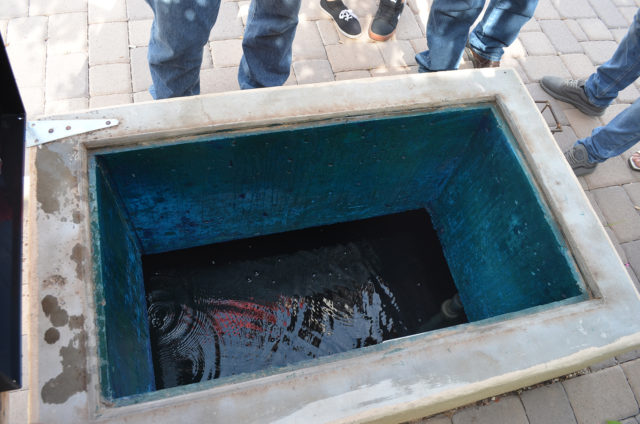
The rainwater harvesting techniques along with their other water conservation methods, such as a composting toilet, allows the Living Lab, which also serves as WMG’s office headquarters, to forego municipal water supplies for rain. We were all impressed by the different ways in which the Living Lab shaped the landscape to absorb and use water that might otherwise become a flooding concern. The Living Lab served as a fantastic example of how rethinking the value of rainwater can help sustain people and landscapes, reduce water consumption and keep water off the streets.
Next Stop: Shalom Mennonite Fellowship Church
Following the Living Lab tour, we visited the grounds of the Shalom Mennonite Fellowship Church for further inspiration. Emma Stahl-Wert, a WMG employee and church member, devised the idea of turning what was once a dim gravel parking lot into a model rainwater harvesting project. Bioswales large and small now cover the parking lot, allowing water to soak into groundwater aquifers instead of collecting in the street, getting dirty, and going down storm drains where it eventually flows directly into Tucson’s washes and streams. I was excited to hear and witness how one person’s vision changed the makeup of a space that will provide many benefits for the community well into the future.
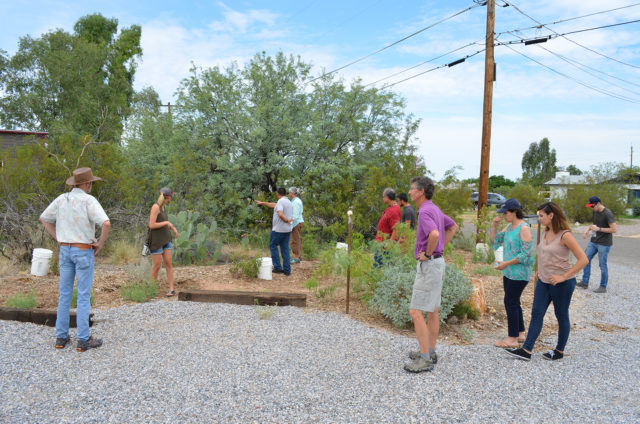
Last Stop, a Learning Lunch: Conversation with Pima County Flood Control
After our morning out in the Tucson sun, we stepped back into the New Hope Church for lunch where we met with Janice Hughes from Pima County Flood Control (PCFC). She talked to us about the possibilities of using the land behind the church, currently a large barren lot, to combat flooding. The road next to the lot serves as an access point for homes on one side of the neighborhood to the church and elementary school located on the other side, but during flooding events the lot completely inundates, blocking passage for cars and pedestrians. To help people cross the area, a makeshift bridge had to be erected on the side of the road. Children can currently walk to school during low level flooding events, but if flooding worsens the bridge may not be enough.
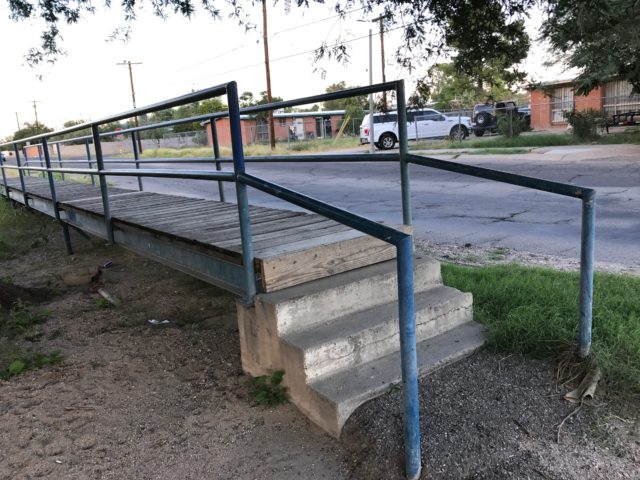
PCFC suggested digging a detention basin in the lot that will allow it to collect a large amount of water, which would then slowly seep into the ground. In addition, the basin could be modified to hold a park for the community. The idea of a park stood out to the church leaders, with good reason–the neighborhood lacks a recreational area. And, the idea stood out to us as Planners because it offers another way to rethink the role rainwater plays in our community environment.
Our Hopes for the Project
The hope is that this project will serve as a model to carry out more initiatives of this nature. Capturing rainwater will allow us to create pleasant green spaces and reduce flooding, while also filling our aquifers that help maintain healthy, strong flowing rivers for all to enjoy. The Sonoran Institute and Watershed Management Group are lending expertise and resources to guide the design and implementation, but community members will ultimately shape the green space that will collect rainwater and make light of rainy days.
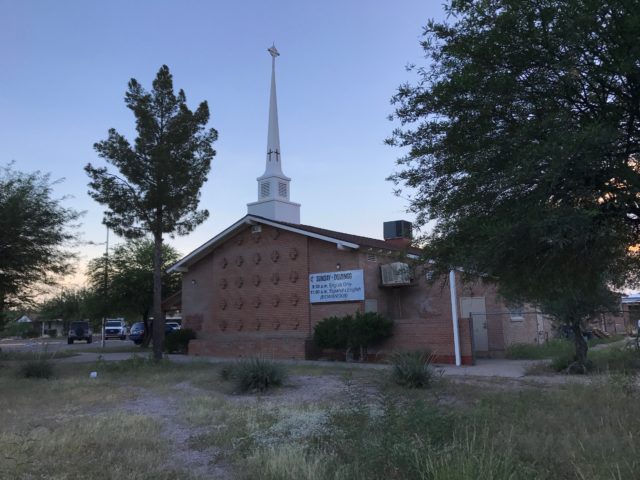
Blog Post By: Brandon Ruiz, Program Associate – Resilient Communities and Watersheds
